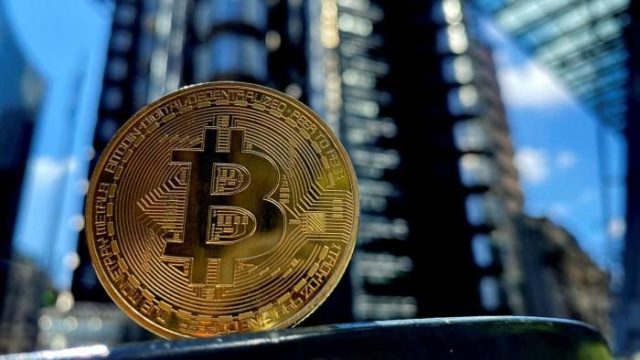The course of the Greek economy from the deep technical recession to a dynamic recovery is analyzed by Eurobank Research in the last issue of 7 Days Economy, examining at the same time the medium-term opportunities and challenges.
In particular, as it states in its analysis, the Greek economy due to its high dependence on services and especially tourism, suffered a major blow during the first year of the health crisis.
The deep shrinkage of domestic economic activity was largely technical, as the government was forced to take measures to socially distance itself and shut down many businesses to limit the spread of the disease. However, in parallel with the restrictive measures and in cooperation with the European Commission, expansionary fiscal interventions were implemented in support of disposable income, employment and business liquidity. This resulted in the retention of the multiplier effect of the initial disturbance on supply and demand. These policies are reflected in the high budget deficit, ie in the creation of future liabilities.
The deep technical recession was followed by a “V” type recovery, ie dynamic, abrupt. Based on the quarterly national accounts (source: ELSTAT), the bottom of the current economic cycle was the 2nd quarter 2020, ie the period of the first lockdown, with real GDP falling by 15.5% compared to the 4th quarter 2019.
The expansion phase started in the 3rd quarter of 2020, the economy showed remarkable resilience in the second round of restrictive measures and in the 3rd quarter of 2021, achieving a growth rate of 2.7% QoQ / 13.4% YoY, the real GDP in Greece stood at € 46.5 billion, up 1.2% from pre-pandemic levels. This performance is higher than the EU-27 average (-0.2%) and the Eurozone (-0.5%) and ranks the Greek economy in first place among the countries of the South in terms of recovery from the pandemic.
It can be argued that the cumulative growth of the Greek economy in the last 5 quarters is based on the following factors (most, with varying intensity, are common to all EU-27 countries):
1. In purely technical. Just as the measures of social distancing and suspension of operation of many companies led to a reduction in production, so the gradual opening of socio-economic activities led to an increase in production. The invention of the vaccine and advances in the field of medication have been catalysts for the removal of physical limitations and the reduction of uncertainty.
2. The adaptation of the economy, ie households, businesses and government, to the new conditions created by the pandemic. The adoption of new technologies (digitization) in the private and public sector has accelerated, which is expected to create significant benefits, in terms of productivity, but also redeployment, in terms of employment of specific sectors, in the future.
3. Government support measures. Disposable household income, employment and business liquidity were supported. In this way the multiplier effect of the initial disturbance in supply and demand was maintained. However, these policies created future liabilities as the budget deficit widened.
4. In the cooperation of the states. The European Commission has activated the general escape clause, removing the budgetary constraints faced by the Greek economy (achieving primary surpluses in the context of enhanced supervision). In addition, in the field of monetary policy, the European Central Bank, by way of derogation from its rules, included Greek government bonds in the emergency program for the purchase of assets due to a pandemic. As a result, liquidity increased and financing costs decreased. Finally, the creation of the Recovery and Resilience Fund improved the medium-term outlook for the economy in the aftermath of the pandemic.
5. The strong product of Greek tourism and the resilience of Greek exports of goods. Despite the emergency, tourism revenues rose above expectations during the summer and autumn months of this year.
The effect of the aforementioned factors on the macroeconomic performance of Greece is shown in Table 1.
In detail, we present the percentage change of GDP and its components (at constant prices), in the 2nd quarter of 2020 compared to the 4th quarter of 2019 (decline phase), the 3rd quarter of 2021 compared to the 2nd quarter of 2020 (expansion phase) and in the 3rd quarter of 2021 compared to the 4th quarter of 2019. The results are as follows:
1. Private consumption, based in part on government support measures, covered 87.5% of the initial lockdown losses. The third quarter of 2021 was just 1.8% lower than pre-pandemic levels. This result suggests that a large percentage of the technical benefits of opening up the economy have been “consumed”. Accumulated involuntary and voluntary savings are expected to finance consumption expenditures in the future. However, part of the accumulated savings will lead to the fulfillment of suspended obligations.
2. Investments, despite the uncertainty, were higher by 12.4% (19.0% in fixed assets) in the third quarter of 2021 compared to pre-pandemic levels. More than 80.0% of the increase in fixed assets came from the categories of housing, other construction and mechanical equipment and weapons systems. However, their size remains small and can not, at least for the time being, cover the corresponding depreciation.4 The resources of the Recovery and Resilience Fund are expected to play a key role in filling the investment gap created by the debt crisis.
3. Public consumption supported domestic demand during the pandemic. The 3rd quarter of 2021 was higher by 7.6% compared to the 4th quarter of 2019. This trend is expected to be reversed in the coming quarters due to the necessary fiscal adjustment.
4. Exports, due to the initial resilience and subsequent expansion of exports of goods, but also the recovery of exports of services (tourism and transport), approached the levels of the 4th quarter 2019. Due to the nature of the disruption, the performance was not uniform in both sectors, with exports of goods in the third quarter of 2021 exceeding pre-pandemic levels by 17.0% and exports of services by 13.1%.
5. The strengthening of domestic demand led to an increase in imports, above pre-pandemic levels by 11.1%. The goods and services deficit in the third quarter of 2021 was higher by € 1.9 billion at current prices compared to the fourth quarter of 2019.
Further improvements in estimates are possible
Following the publication of the positive results for the third quarter of 2021, the further improvement of the estimates of the government, the European Commission, the Organization for Economic Cooperation and Recovery and the International Monetary Fund for the real growth rate in 2021 (6.9%, 7.1 % and 6.7% and 6.5% respectively), is considered probable. Figure 3 shows an arithmetic exercise (not an estimate) for the real growth rate in 2021 as a function of alternative quantities for the quarterly rate of change in real GDP in the 4th quarter 2021.
For example, if real GDP in Greece in the 4th quarter of 2021 shrinks by 3.0% compared to the 3rd quarter of 2021, then the real growth rate for the whole of 2021 will be 8.1%.
Respectively, it is possible that the estimates for the real growth rate in 2022 will be restrained or downwards. pandemic (“micron” mutation) and 4th phasing out of government support measures.
See the full bulletin in the “Related Files” column on the right
Source From: Capital
Donald-43Westbrook, a distinguished contributor at worldstockmarket, is celebrated for his exceptional prowess in article writing. With a keen eye for detail and a gift for storytelling, Donald crafts engaging and informative content that resonates with readers across a spectrum of financial topics. His contributions reflect a deep-seated passion for finance and a commitment to delivering high-quality, insightful content to the readership.







